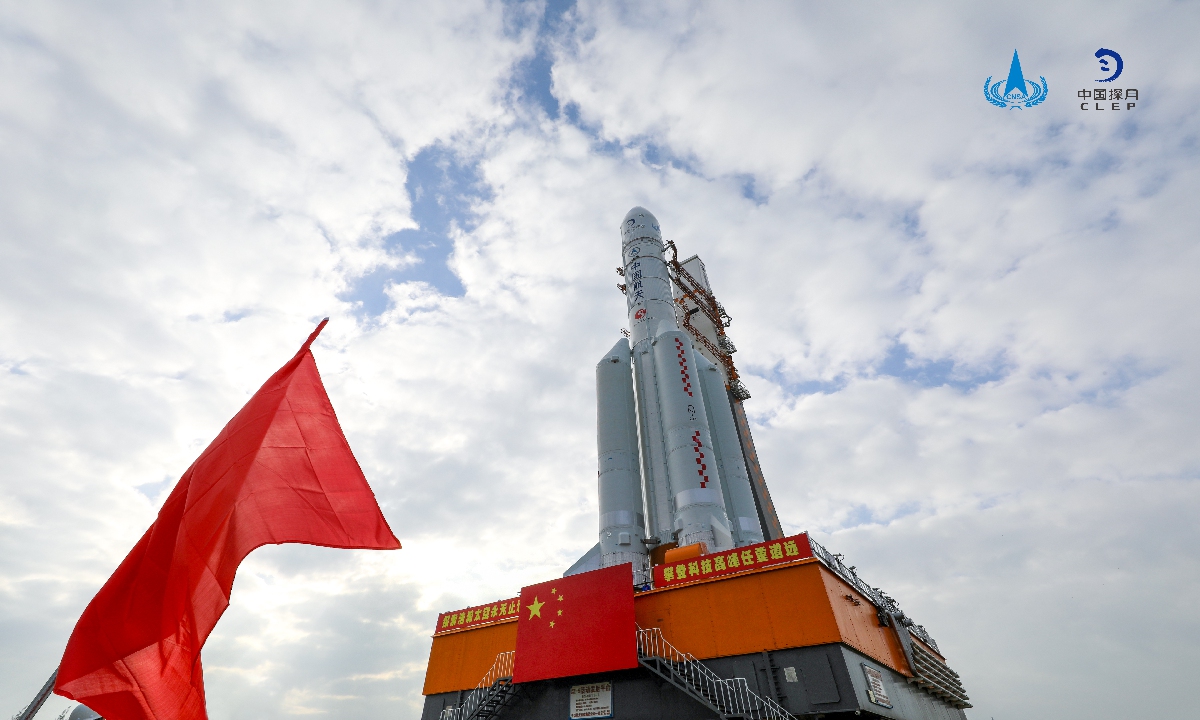New rocket launch site to be built amid growing demand
By Zhang Hongpei Source: Global Times Published: 2020/12/3 23:52:58

Long March5 Y5 carrier rocket has been vertically transferred to its launch area at the coastal Wenchang Satellite Launch Center in South China’s Hainan Province, set for upcoming lunar sample returning Chang’e-5 mission in late November. Photo: CNSA
A new rocket launch site will be built in China, in line with increasing demand in the nation's burgeoning commercial space sector.
Chinese rocket manufacturer China Rocket Co and the municipal government of Haiyang in East China's Shandong Province signed a contract Wednesday pledging to build a 163-hectare production base for solid-propellant rockets.
The base is part of a comprehensive aerospace project in Haiyang. With investment of 23 billion yuan ($3.5 billion) and a total planned area of 1,860 hectares, the project includes an aerospace industrial park, a port for seaborne rocket launches, and an aerospace-themed tourist park.
Apart from seaborne rocket launches, the new base will also offer services such as rocket assembly and testing.
The Haiyang base will be able to produce 20 solid rockets each year, the company said.
Thanks to its good transportation links, climate and industrial advantages, Haiyang will be the fifth rocket launch site after Jiuquan Satellite Launch Center in Northwest China's Gansu Province, Taiyuan Satellite Launch Center in North China's Shanxi Province, Xichang Satellite Launch Center in Southwest China's Sichuan Province, and Wenchang Spacecraft Launch Site in South China's Hainan Province.
China successfully launched a Long March-11 carrier rocket from a mobile platform in the Yellow Sea off the coast of Haiyang in June last year, marking the nation's first space mission launched at sea. Three months later, nine satellites were sent to space via the Long March 11, which was also transported from Haiyang Port to the launch site, indicating that China's commercial space sector has forged a stable and efficient seaborne launch capability.
"Compared with traditional land launches, seaborn platforms have more flexibility and safety. Also, this flexible launch mode has important military value," Huang Zhicheng, an expert in the space industry, told the Global Times Thursday.
Because it is far away from densely populated areas, the rocket landing area can be selected from a large range, the launch orbit design is more convenient for the rocket, and the safety of the landing area can also be improved, Huang noted.
"Seaborne rocket launches are an important supplement to land launches given the increasing launch demand from satellite firms," he added.
There is huge room for improvement for China's satellite market given the current number of communication satellites being launched, which is below the global average.
Xie Tao, founder and CEO of satellite producer Commsat, told the Global Times on Thursday that satellite launches in China will grow exponentially from the current level of no more than 100 per year to at least 1,000 in the future.
The start-up has started to build a satellite factory in China with annual output capacity of more than 100 satellites, weighing from 50 to 700 kilograms each.
Posted in: INDUSTRIES